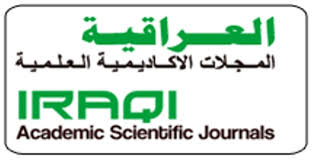Praxis (Gramsci) as a critical practice, and its representations in contemporary art
DOI:
https://doi.org/10.59767/2023.8/26.1Keywords:
Praxis, Gramsci, practice, criticism, artAbstract
This research deals with the concept of Praxis in the thought of (Gramsci), in order to identify the function that is related to Praxis as a critical practical practice, represented in the human activity of a procedural nature, which is related to many aspects of life, so that it includes all practices, including the practices of the artist, With the meaning that this artistic practice bears, it is involved in the various moments of the creative activity of the artist, which stems from a deep awareness and critical understanding in dealing with issues in society. Accordingly, the structure of the research was established within four chapters - the first chapter (the methodological framework) contained the research problem, which the researcher summarized by asking him - Monitoring artistic practices, which are related to Praxis, as a human activity and a critical work aimed at change in society?
The importance of the research and the need for it were also determined, and the aim of the research was to reveal the representations of Praxis in contemporary art as a critical practice that affects society. As for the second chapter (the theoretical framework) - it included two sections - dealing with the first topic: (the compatibility between theory and practice, in Gramscian Praxis). The second topic dealt with (praxis as a critical practice and its effectiveness in society). The third chapter (research procedures) included defining the research community, and (3) artworks were selected, which the researcher analyzed as a sample for the community. While the fourth chapter contained (results and conclusions), presented by the researcher. The most prominent of which are:
1- Praxis represents human activity of a procedural nature directed towards practical functions, which lie in the practical relationship with the tangible world.
2- Praxis, as a critical process, combines aesthetic practice and critical practice in some artistic achievements, in a way that makes these works of human tendency and social and critical content, according to a character opposed to the current conditions in society.
References
Abbas, M. A., & Al-kinani, A. A. (2022). Intellectual Implications of the Duality of Mother and Child in the Social Perspective. JOURNAL FOR EDUCATORS, TEACHERS AND TRAINERS(13), pp. 229–237. doi:https://doi.org/10.47750/jett.2022.13.04.032
Ahmad, A. A., & AlKhazali, M. A. (2023). Controversy of meaning and deviation of centers in contemporary Iraqi painting. Basrah Arts Journal(25), pp. 5-17. doi:https://doi.org/10.59767/bfj.5300.1980
Al-Musawi, R. (2013). The Comprehensive Philosophical Guide (1 ed., Vol. 2). Beirut, Lebanon: Al-Mahjah Al-Bayda House for Printing and Publishing.
Badawi, A. Z. (1982). A Dictionary of Social Sciences Terminology (2 ed.). Beirut: Library of Lebanon.
Fouad, A. A., & Majeed, B. A. (2023). Conceptual art and its role in awareness campaigns. Basrah Arts Journal(25), pp. 37-44. doi:https://doi.org/10.59767/bfj.5300.1983
Gramsci, A. (2017). On Italian National Unity. (F. Trabelsi, Trans.) Italy: Mediterranean Publications.
Gramsci, A. (2017). The Modern Prince ,Cases of Political Science in Marxism. (Z. Cherfan, & Q. Al-Shami, Trans.) Beirut, Lebanon: Al-Jamal Publications.
Gramsci, A. (2018). Issues of Historical Materialism (Vol. 2). (F. Trabelsi, Trans.) Beirut: Dar Al- Taleeah for printing and publishing.
Hoare, Q., & Nowell, G. (1999). SELCTIONS FROM THE PRISON NOTEBOOKS OF ANTONIO GRAMSCI. London: ELEC BOOK, London, 1999- Transcribed from the edition published by Lawrence and Wishart, London , 1971.
Jenzy, H. T. (2022). narrative functions in Renaissance paintings. Basrah Arts Journal(22). doi:https://doi.org/10.59767/bfj.5300.1977
Kareem, N. S., & Aldaghlawy, H. J. (2022). Pictures of death in the Iraqi theatrical performance. Basrah Arts Journal(22), pp. 187-206. doi:https://doi.org/10.59767/bfj.5300.1976
Lalande, A. (2001). Lalande s philosophical Encyclopedia ( 2 ed., Vol. 1). (K. A. Khalil, Trans.) Beirut: Oweidat Publications.
Majeed, H. A., & Hussain, M. A. (2023). Sculptural proposals for the logos of the faculties of Iraqi Universities - an applied study. Basrah Arts Journal(25), pp. 111-118. doi:https://doi.org/10.59767/bfj.5300.1989
Marhaba, M. A.-R. (1988). The Philosophical Question (3 ed.). Beirut: Aweidat Publications.
Marshall, G. (2007). Encyclopedia of Sociology (2 ed., Vol. 1). (A. Muhammad, & others, Trans.) Cairo: The Supreme Counil of Culture.
Omar, A. M. (2008). Dictionary of Contemporary Arabic Language (1 ed., Vol. 1). Cairo: World of Books for Printing.
Pozzolini, A. (1977). Gramsci - his life and thought. (S. Karam, Trans.) Beirut, Lebanon: The Arab Institute for Studies and Publishing.
Saliba, J. (1982). The Philosophical Lexicon (Vol. 1). Beirut, Lebanon: The Lebaneae Book House.
Siheem, A. J., & Minshed, A. A. (2023). The theory of reception and its applications in contemporary Iraqi sculptural ceramics. Basrah Arts Journal(25), pp. 99-110. doi:https://doi.org/10.59767/bfj.5300.1988
Smith, C. (2009). Encyclopedia of Anthropology (2 ed.). (M. A. Jawahiri, & others, Trans.) Cairo: National Center for Translation.
Taksih, J. (1972). Gramsci-Study Selections and Translated. (M. I. Makhoul, Trans.) Damascus: Publications of the Ministry of Culture.
Downloads
Published
How to Cite
License
Copyright (c) 2023 Sami Qasim Alfartosi, Nasser Samari Jaafar (Author)

This work is licensed under a Creative Commons Attribution 4.0 International License.







